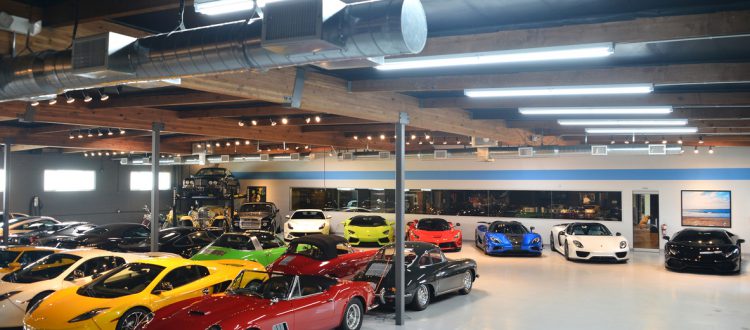2020 Ford Mustang Shelby GT500 Enters the Horsepower Wars

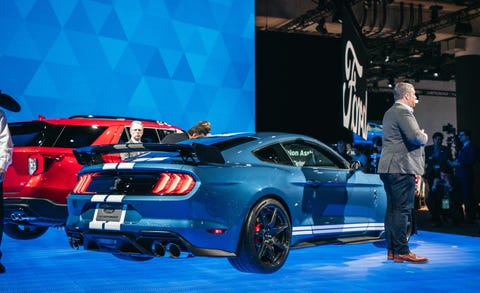
It had to happen. You didn’t think Ford was going to sit around in Dearborn, Michigan, gnawing on chicken shawarma sandwiches while its competitors built Hellcats and ZL1s, did you? Carmakers might be dumping increasingly large loads of money into ride-sharing schemes and electric cars, but meanwhile the big-boy pony cars are playing with 700-plus horsepower. Seven-hundred-plus horsepower. Think about that for a second. The Le Mans–class-winning, half-million-dollar Ford GT makes 647 horsepower. A $300,000 McLaren 720S only just crests the 700-hp summit. And the Porsche 911 Turbo S produces a paltry 580.
So, yes, Ford has launched the latest salvo in this power war with the 2020 Shelby GT500. It is what longtime Mustang designer Melvin Betancourt describes as the model line’s “holy shit” car. Holy shit indeed.
The supercharged V-8 thumper makes—drum roll, please—”700-plus” horsepower. Ford won’t say precisely what the GT500 will be rated at and claims it won’t have official numbers until this summer, mere months before the vehicle goes on sale. But it doesn’t make much sense for Ford to produce a vehicle that makes less power than its main adversaries. The Blue Oval will need to best the output of Chevy’s 650-hp Camaro ZL1 and the Dodge Challenger’s updated 717-hp Hellcat. We’re guessing that the GT500 will come in around its rumored 720 horsepower and pump out in the neighborhood of 650 pound-feet of torque.
Whatever the numbers, they’ll come from a supercharged DOHC 5.2-liter V-8 derived from the one-rung-lower GT350‘s engine. The GT500’s shares the lesser Shelby’s 94.0-millimeter bore and 93.0-millimeter stroke but not its flat-plane crankshaft, and it redlines at 7500 rpm, 700 lower than the naturally aspirated engine. But who needs insane revs when an Eaton TVS R2650 supercharger is nestled atop the engine? It’s the same 2.7-liter unit used in the 755-hp Chevrolet Corvette ZR1 and crams 12 psi of boost into an internally strengthened V-8. The engine has a new cast-aluminum structural oil pan, which has both static baffles and hinged doors that open and close under high g-forces to fend off oil starvation. Ford Performance chief functional engineer Ed Krenz says this allows for sustained track survivability without a dry-sump system. Likewise, says Krenz, the upgraded cooling package compared with a GT350 will keep the engine happy on long track runs. It includes an air-to-liquid intercooler mounted atop the supercharger, an upgraded radiator, an engine-oil cooler, and a transmission-oil cooler.


Torque flows to a Tremec-sourced seven-speed dual-clutch transmission developed for this application. There will be no manual. Krenz claims that the transmission is capable of shifts in about a tenth of a second; roughly what a Porsche PDK can do and about twice as quick as shifts from the Chevy ZL1’s optional 10-speed automatic. The dual-clutch will respond differently depending on the drive mode selected. Drag mode will deliver shifts with no torque interruption, and Track mode will take steering angle, among other parameters, into account to prevent an abrupt shift that could destabilize the car. It can be left in automatic mode or controlled via magnesium shift paddles. Predictably, the software includes launch control and a line-lock feature. Power routes rearward through a carbon-fiber driveshaft to a Torsen limited-slip rear end carrying 3.73:1 gears and out to the wheels via beefed-up half-shafts and CV joints. Exhaust gases exit through four tailpipes, each a girthy five inches in diameter.
Ford is adamant that, unlike previous iterations, this GT500 will go left and right just as well as it proceeds in a straight line. Using the brilliant-handling GT350 as a basis for the big-power car is a good start. It will carry the same basic strut front and multilink rear suspensions as the GT350. But in addition to using stiffer springs, fatter anti-roll bars, and retuned magnetorheological dampers, the GT500’s front suspension has revised geometry aimed at reducing the tramlining that’s omnipresent in the GT350—we expect that the GT350 will also receive this modification soon. The increased stiffness helps to manage the GT500’s greater mass compared with the GT350 and the increased unsprung weight of the standard 20-inch wheel-and-tire package. The standard wheels are aluminum and wrapped in Michelin Pilot Sport 4S summer tires, sized 305/30ZR-20 in front and 315/30ZR-20 in the rear. The optional Carbon Fiber Track package brings carbon-fiber wheels wearing Michelin Pilot Sport Cup 2 track tires, an adjustable carbon-fiber wing, a rear-seat delete, and dive planes up front. All GT500s carry a strut-tower brace made of an elaborate magnesium latticework. The 20-inch wheels were necessitated by the standard two-piece iron-and-aluminum brake rotors. Measuring 16.5 inches, the front rotors are grabbed by six-piston Brembo calipers. The rears are 14.6 inches in diameter and carry four-piston calipers.
By: Daniel Pund,
For more cars, check out: https://www.caranddriver.com/news/a25862095/2020-ford-mustang-shelby-gt500-photos-info/
Source: www.caranddriver.com
Flying Car? Elon Musk Says The New Tesla Roadster Just Might!
Earlier this week, Tesla CEO, responded to a Twitter follower who sent him a GIF of a flying car, stating “The new Roadster will actually do something like this”. Tesla may just offer an option on the upcoming roadster sports car to allow drivers to utilize thrusters from SpaceX to float above the ground by swapping out the two rear seats.
Shortly after, he confirmed that he wasn’t indeed kidding in his reply.
I’m not. Will use SpaceX cold gas thruster system with ultra high pressure air in a composite over-wrapped pressure vessel in place of the 2 rear seats.
— Elon Musk (@elonmusk) January 9, 2019
But before all of the clamoring Tesla fans began to prep for a preorder, Musk noted that the feature may not be street legal.
I don’t think the law fully anticipated this situation. So probably yes for a while.
— Elon Musk (@elonmusk) January 9, 2019
Musks two companies, Tesla and SpaceX, have a history of sharing resources over the years, from employees to materials. SpaceX’s Falcon Heavy rocket recently accomplished quite a feat in February by launching Tesla’s original Roadster into orbit in last February. So it will be interesting to see the future of the automobile industry with his ability to leverage SpaceX resources.
Investor’s Paradise


State of the Collector Car Market – May 2018

We asked a panel of industry experts for their opinions on the state of the collector car market as they see it and their thoughts on what to expect in the near future.
Gord Duff, Global head of auctions, RM Sotheby’s
Jakob Greisen, Head of U.S. Motoring Department, Bonhams
Craig Jackson, Chairman and CEO, Barrett-Jackson
Dave Kinney, Publisher, Hagerty Price Guide
Automobile Magazine: What are your general views on market performance since this time last year? Are you seeing any new trends emerge?
JG: I generally think the market is strong and solid. The interest we see in these old cars in terms of popularity and high attendance at collector car tours, rallies, racing events, concours d’elegance, and other lifestyle events is a sign that there is a strong passion and interest in collector cars, which is what the market is driven by for the most part. Today it is cool to own a vintage car, just like a vintage watch, for example.
CJ: The collector car market continues to be incredibly dynamic, including the demographic that made the ’60s and ’70s muscle cars so popular. We’re also seeing a surge in younger buyers who are gravitating toward vehicles from the ’80s and ’90s, both domestic and foreign. Vehicles from the 1980s, from the Fox-body Mustangs to Broncos, are becoming canvases for personal customization by more youthful collectors who want to add technology and drive the cars.

© Automobile Magazine Staff
GD: Overall, I feel the collector car market has remained stable since this time last year. Exceptional late-model Porsches continue to emerge with strong results, and then on the other end of the spectrum we’re seeing sustained and even growing interest in American classics; a Marmon Sixteen Coupe and an Auburn Boattail Speedster are now worth a million.
DK: Speaking in pure generalities, the under $100K market is booming, and that is where the majority of sales occur. “New” trends seem to be a continuation of trends that have started in the past few years. Early SUVs and exotic cars from the 1990s and early 2000s are on many buyers’ radar.
AM: We’ve seen many big-dollar “star” auction cars not reach reserve this year. Why do you think that is?

© Automobile Magazine Staff
JG: Timing and sellers’ expectations. Timing as the buyers might just not be ready for that purchase on that day, but I know for a fact that most could have found new homes at levels relatively close to the reserves, so sellers’ versus buyers’ expectations have just been a little off.
CJ: Those big-dollar cars are really in the smallest part of the market, which sees those cars as a safe haven during a recession. Now that the economy is strong, the smaller part of the market is slowing, and we’re seeing the biggest, broadest part of the market surging.

© Automobile Magazine Staff
GD: We all know that the market has softened from where it was a couple of years ago, so the main reason for several of the “star cars” failing to meet reserve simply comes down to client expectations being greater than what today’s market is willing to bear. In a highly competitive auction market, it can be difficult to convince collectors to part with their blue-chip cars for less than what might have been.
DK: U.S. tax laws, particularly in light of the loss of the tax-free exchange as used in some high-dollar classic automobile sales, has had a dampening effect on the top end of the market, cars routinely selling above $1 million. All markets hate uncertainty, and this change has slowed down the high end quite dramatically.
AM: Porsches remain strong sellers and are making up a larger volume of auction inventories lately. How is the Porsche market evolving? Who’s doing most of the buying?
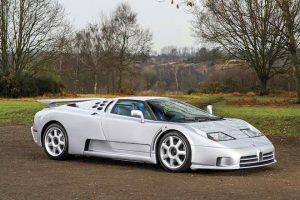
© Automobile Magazine Staff
JG: Porsche is a very strong brand—both for the new cars and the classic models. We sold a 550A Spyder in Scottsdale and had a lot of interest in it—some of the feedback I got was that a Porsche 550 was really the pinnacle of Porsche in the day, and compared to a Ferrari, Maserati, or Jaguar of the era, it really represents good value. They are hugely iconic, beautiful, interestingly engineered, and historically very important on the racetrack or road.
CJ: Porches have been very popular and are really following the broader market trend that we are seeing toward more contemporary cars. From the Slantnoses of the ’80s to the more recent Turbos, Porsches continue to be in demand with the broader part of the market. There has also been a rise among collectors who are using the 911s as a platform to build customized versions of the European sports cars from prominent builders.

© Automobile Magazine Staff
GD: It’s a younger segment of collectors who are buying these special late-model Porsches. Of a dozen late-model examples sold at our Amelia Island sale, eight were purchased by collectors in their early 40s through mid-50s.
Because the Porsche market has been so hot, there’s a lot of average stuff on offer, i.e. specialty models but with higher mileage and paintwork issues—which is particularly important in the Porsche world. The collectors stepping up to pay top dollar are becoming very particular and bringing in the leading marque experts to examine any potential purchases. I’ve never seen us offer a marque—not even Ferrari—where collectors are doing such thorough, fine-tooth-comb inspections.

© Automobile Magazine Staff
DK: The Porsche Party, that is, the rising values of Porsche brand collector cars, started late. Rising values attract interest from collectors, and a lot of people who thought of owning a collector Porsche but never quite did have become active in both buying and selling. If you think this is good news or bad, you’re right.
AM: Buy, Sell, Hold: What is at the top of each list, in your opinion?
JG: I believe all cars that make their mark on the era they were built in will be collectible. Think Duesenberg, Alfa Romeo 8C, Jaguar D-type, Ferrari 250 GT California Spider at the top and Triumph TR3, Austin-Healey 100, Mercedes-Benz 190SL, or Pagoda for example at a more affordable level.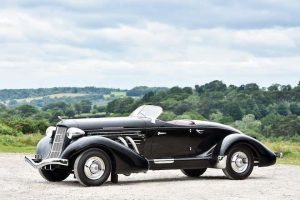
© Automobile Magazine Staff
CJ: Buy: Restomods, ’80s and ’90s imports, trucks/SUVs, rare muscle cars, sports cars with stick shifts. Sell: Prewar classics. Hold: Traditional muscle cars.
GD: Buy: A great Bugatti Veyron or EB110 for their investment potential. Sell: A great American classic—for example, a 1935 or 1936 Auburn Speedster. Hold: Ferrari 206 Dino or a 1973 Porsche 911 2.7 RS Lightweight.
DK: Buy: Bugatti EB110. Sell: Any Porsche 911 with a missing or bad history. Hold: European exotics from the 1960s and 1970s.
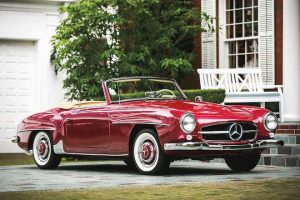
© Automobile Magazine Staff
AM: What traits are you seeing in the buying and selling habits of younger collectors? Are they using their cars differently than their parents did?
JG: I see the younger generation of car collectors being more into driving their cars as opposed to showing them at concours d’elegance events. Maybe a quick cars and coffee meet where a cool Instagram post can be made, and then out on the road.

© Automobile Magazine Staff
CJ: Like Gen Xers, young collectors gravitate to the vehicles they grew up with. For example, we’re seeing cars from the ’80s and ’90s, as well as SUVs, which many in the younger generations grew up in and are comfortable with, have increased in popularity among younger buyers. They’re also looking for unique cars with technology or that are easy to customize into restomods, giving the classic look with all the bells and whistles of a modern vehicle.
GD: Many younger collectors tend to buy cars that their friends also collect or are into simply because it means they can then participate in the same rallies and go to the same car shows and cars and coffee meets on Sundays. They seem to want to drive their cars more than show them, and consequently we’re seeing more and more tours and rallies pop up on the calendar.
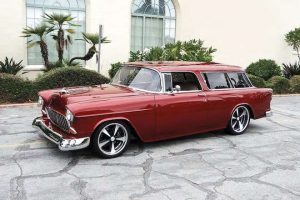
© Automobile Magazine Staff
DK: Different cars, different people, but, remarkably, the car hobby continues. The cars and coffee movement has changed the way people use and display their cars. As the “show and shine” movement retreats, the simple formula of just showing up has taken hold. What’s cool and collectible to a 23-year-old might not appeal to a 63-year-old, but in reality, that’s the same as it ever was.
Hennessey Teases New Venom F5 Hypercar Colors
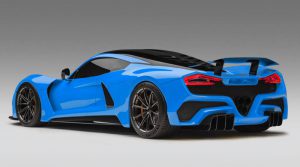
The new Hennessey Venom F5 was unveiled in a brilliant yellow paint that was fitting for a new star in the hypercar world. Now, Hennessey has teased a number of other color options for the Venom F5 in a series of Instagram posts. This includes a “Glacier Blue,” “McLaren Orange,” “Crystal Blue,” “Red Rocker,” “Vader Black,” and a slate gray. Check each of them out below.
The Venom F5 has 1,600 bhp at the ready, which is enough power to propel the hypercar to speeds over 300 mph. This power comes from Hennessey’s own twin-turbo V8 engine that’s mated to a 7-speed single-clutch transmission that sends power to the rear wheels. Thanks to its light weight of 2,950 lbs and a low-drag coefficient, the Venom F5 will rocket from 0-186 mph in less than 10 seconds– that’s quicker than current Formula 1 race cars. Zero to 249 mph and back to a stop will be accomplished in under 30 seconds, faster than Koenigsegg’s current world record.






Buy or sell your exotic car at duPontREGISTRY.comand check back with Autofluence.com for more supercar news.
Originally written by Edward Jones for duPont Registry Autofluence.
(https://blog.dupontregistry.com/aftermarket/hennessey/new-venom-f5-colors/)
Classic Luxury Cars and Vintage Vehicles Need Special Attention for Winter Storage

For many classic car owners, the perils of harsh winter road conditions plus the possibility of rust from road salt means one thing: It’s time to store their vintage vehicle. Use the following tips to ensure that your pride and joy survives its hibernation in top form. They’ll make it much easier to bring your baby back to life when better weather arrives, too.
There’s No Place Like Storage
A climate-controlled storage facility or a well-insulated and ventilated garage are the best places to store your classic car over the winter. The controlled environment will help keep humidity at bay, providing fewer opportunities to develop rust and corrosion.
If you have no choice but to store your vehicle outdoors, a high-quality car cover is a must. Simply wrapping your classic car in a blue tarp won’t offer the moisture-blocking protection that a superior car cover offers. You can find these covers at most auto supplies shops in a wide variety of sizes and shapes.
Keep your vehicle insured while it’s in storage, too. In the event that anything happens, a good insurance policy covers your losses. Look for a company that offers insurance specifically for vintage vehicles. The Hartford offers discounted rates for AARP members and provides classic car coverage, as do some other reputable providers.
Pre-Storage Wash and Wax
Make sure it is clean both inside and out. Washing your vehicle beforehand gets rid of various environmental contaminants that could eat away at the paint finish as your vehicle sits. Freshen up the interior with a thorough cleaning, too—not only does this leave it spotless for your next jaunt come springtime, but it helps reduce the chances of vermin sneaking in for want of a few food crumbs.
Give your classic car a good waxing in order to shield the paint finish from any contaminants during storage. As Consumer Reports notes in its wax-buying guide, test out your new wax in an inconspicuous area before using it on the entire vehicle.
Protection From Rust
The last thing you want to see after several months of storage is rust. WD-40 lubricant works remarkably well at inhibiting rust formation on metal surfaces. A liberal application on exposed metal surfaces within the engine area, as well as other portions of the vehicle where exposed metal is present, provides a protective film against rust.
Stabilize the Gasoline
Over time, the gasoline inside of a classic car can break down into varnish, which has the potential to clog up portions of the fuel system, including the carburetor and fuel pump. To make matters worse, the ethanol found in most modern blends of gasoline has the ability to break up this varnish, making it much easier for the fuel system to become clogged up. Ethanol also has the ability to deteriorate gaskets and seals made before the widespread use of the additive in gasoline.
Additives like Sta-Bil or dry gas help keep fuel relatively stable throughout long storage periods. Available at most major auto parts stores, these additives prevent gasoline from breaking down into varnish, keeping it fresh enough for use for periods up to a year. Don’t forget to keep your gas tank topped off. Doing so helps ward off moisture and corrosion that could otherwise form in a partially empty tank.
Originally written for The Pinnacle List
What Are the Typical Upkeep Costs for a Classic?
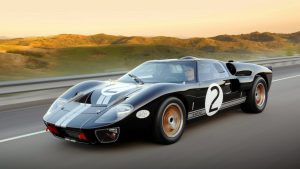
Owning a classic car can be pretty expensive when it comes to maintenance, or it can be very reasonable. As a general rule, the more expensive the car, the more expensive the upkeep, but other factors are also involved, including rarity of the automobile, accessibility of the parts, and age of the car. Show cars and collector cars are also typically more expensive to maintain. It is interesting to note that many classic car owners say that their classics are well built and rarely have problems. Protecting your car with a cover and cranking it regularly will help keep repair costs down.
These questions can help you get an idea of whether you are going to be shelling out a lot for maintenance costs or if it will be less expensive for you.
What kind of car?
Just like modern cars, some classics are more expensive to keep up than others. For instance, a classic Fiat might run around $2,000 a year for maintenance, while a classic Ford could run around $600.
How much will you drive it?
A daily driver will require more maintenance due to standard wear and tear, but not running your car at all could actually cost you more. Classic cars that are never cranked or driven tend to experience mechanical issues more often than cars that are driven regularly.
Is it a resto project or showroom ready?
A resto project will naturally cost more than a car that is ready for show. Resto costs may not necessarily fall under maintenance, per se, but some can be. Showroom ready cars are ready to go so there are little to no costs related to restoration.
Is the car stock or modern?
A car that has stock parts (original) is usually less expensive to maintain, but can be more expensive if you have to replace a part. Some older car parts are hard to find. The scarcity drives up the price. On the other hand, a classic that is modern may have parts that are easier to locate, but they can be more complex when it comes to repairs or even maintenance.
Are you doing your own repairs or hiring a mechanic?
As with any car, doing your own repairs can be less expensive that hiring a mechanic – if you know what you are doing. If you know how to do basic car maintenance or simple repairs, that can be golden, but if you don’t the costs could go through the roof, especially if you have to get repairs for damage you caused. If you don’t have the mechanic skills, it is cheaper to find a pro to do it.
Your classic car can be a great addition to your collection or make an excellent daily driver. Woodside Credit can help make it happen. Visit our website to apply for your classic car loan and get that classic beauty you’ve always wanted.
Originally written for Woodside Credit
(https://www.woodsidecredit.com/typical-upkeep-costs-classic/)
Luxury Auto Storage Is Always the Right Choice

Storing your prestige car
When it comes to your prestige supercars, care is a very important aspect. Supercars are fast, they are fun, and in some cases, look crazy, but they still need due care and attention to ensure they remain in the best condition possible. This helps maintain the car’s value and stops it depreciating by too much.
So what do you do when circumstances change and you have to be away for long periods of time due to business or personal commitments?
We suggest the best way of keeping your prestige cars in top condition is to put them in specialist storage facilities for prestige cars instead of, for example, simply leaving them in your home garage or worse, out in the open air.
Risks of storing in the wrong place
While leaving it outside, might seem like an easy choice because you don’t have to clear out your own garage or pay for storage, however it can have serious adverse effects on the car.
Leaving a luxury supercar outside to be exposed to rain, wind, freezing temperatures, snow and sunlight can lead to the car suffering in the long-term. Although you may not see the effects day to day, but at the end, if you ever come to sell it, the value of the car will be lower than it should be.
Also if you are away from home for long periods of time because of business or personal reasons, then to reduce risk of theft or damage, it would be a good idea to not leave them at home in the garages and place them in specialized storage facilities where they are under 24-hour security and secure storage containers.
Benefits of luxury car storage
When it comes to the benefits of storing your supercar, luxury car or even a normal everyday car that you do not use often, there are a variety of reasons to use car storage facilities.
Security is essential for cars of high value because everyone has seen cars keyed, or convertible roofs torn off or even number plates removed. This can all cost much more to replace than is needed and to avoid that, storage is a better choice. The facilities are locked and often have a security team on shift.
The private garaging means that your car is free from vandalism, but also free from the elements. This includes things like tree sap, or leaves, or bird droppings, or sunlight whether than be direct or indirect. When considering how the environment will affect your car in the long run, private garaging is something to very much consider.
When it comes to humidity, this can really affect your car. If the moisture in the air that lowers the relative humidity, then this can have a serious effect on your car and can lead to the development of rust. This is a real issue for supercars and luxury cars. Storage facilities are able to control the relative humidity that means that your car can be kept in a controlled environment and therefore kept in a much better condition than if left out in the natural environment.
Some storage facilities also offer to service and maintain your car, whilst it is in their possession. This means that when you eventually collect it from your chosen facility, it should be in top condition and that removes all your main worries. You can simply drive it away and enjoy the act of actually driving a beautiful, fast, fun supercar or a comfortable luxury car.
Originally written for Talk Business
(http://www.talk-business.co.uk/2016/06/22/storing-prestige-car/)
Want Speed? At 261 MPH, the Bugatti Chiron Has the Answer

THE CLARKSON REVIEW: BUGATTI CHIRON
I’ve done fast and silly fast, but this is flaming ridiculous
SEVERAL years ago I reviewed the Bugatti Veyron in The Sunday Times and was a bit gushing. I talked about the sheer complexity of making a car feel stable and poised when it was travelling at 240mph-plus, and how dangerous and annoying the air can be at such speeds.
A 240-mph wind would knock over every building in New York. It would devastate and destroy everything in its path. And yet the Veyron had to be able to deal with wind speeds this high while being driven by someone whose only qualification was an ability to reverse round a corner and recognise a “Give way” sign.
I marvelled at the engineering in that car — it had 10 radiators to keep it cool — and reckoned that, because of the relentless war on speed and internal combustion, we would never see its like again. There just wouldn’t be the appetite to make a replacement. It would be just too difficult, not just politically, but also from an engineering standpoint.
And it turned out to be doubly difficult, given that Bugatti’s parent company, Volkswagen, is spending every penny it has on dealing with Dieselgate.
But despite all the odds, Bugatti has come up with a replacement. It costs £2.5m, it’s called the Chiron and somehow it is even faster than the Veyron. It has a top speed of 261mph, which means it’s covering more than 125 yards a second. You know the Apache helicopter gunship? It’s faster than that.
The 8-litre engine is partly the reason for this almost unbelievable pace. It has 16 cylinders arranged in a “W” formation and it’s force-fed by four turbochargers. The result is a say-that-again 1,479 brake horsepower. Yup, 1,479 brake horsepower.
But equally important is the body and the way it lowers itself and changes its angle of attack the faster you go. You don’t know this is going on from behind the wheel. Because you are too busy watching the road ahead and thinking, with very wide eyes: “This is f****** ridiculous.”
Last week I drove the Chiron, not just for a couple of laps round a racetrack under the watchful gaze of a minder, but all the way from St Tropez to the border with Switzerland and then to Turin. I got to know it well and I still haven’t stopped fizzing. The speed is beyond anything you can even possibly imagine.
At one point on the French autoroute I became mixed up in one of those rallies where young men take their Audi R8s and their Aston DB11s and their Oakley wraparound sunglasses on a tour of chateaux and racetracks in the sunshine. They kept drawing alongside and roaring off in the hope I’d put my foot down. So after a while I did.
“It’s acceleration and G-force so vivid, you can actually feel your face coming off. It’s speed that hurts”
There is nothing made by any mainstream car maker that could hold a candle to the Chiron. A McLaren P1 doesn’t even get close. It’s like comparing me as a drummer with Ginger Baker.
And it’s not just the speed in a straight line that leaves you breathless and scared. It’s the pace coming out of the corners. Plant your foot into the carpet in first gear emerging from a hairpin, and every single one of the horsepowers you’ve engaged and every single pound foot of torque is transferred with no fuss, and no wheelspin, directly into forward motion. It’s acceleration and G-force so vivid, you can actually feel your face coming off. It’s speed that hurts.
There’s a secret button that you really don’t want the police to know about. But if you push it, the digital air-conditioning readouts will quietly inform you what speed you’ve been averaging. Often I’d sneak a look. And often it came up with a figure over 120mph. That’s an average. On a mountain road (which was closed to the public, since you ask). Like I said. It’s ridiculous.
But it’s never difficult. Oh, I’m sure Richard Hammond could roll it down a hill, but for the rest of us it’s a doddle. There are no histrionics. The exhaust system doesn’t pop and bang. The engine doesn’t shriek. There are no aural gimmicks at all. And everything you touch is either leather or metal. Unless it’s the badge. That’s sterling silver.
If Rolls-Royce were to make a mid-engined supercar, it would feel something like this, I suspect. It’s never hard or jarring. It doesn’t pitter-patter even on cobbles. And it has a boot into which you can fit, um, a grapefruit.
The downside of this comfort and luxury is that it doesn’t really behave like a mid-engined supercar. It doesn’t flow. There’s no delicacy. It just launches itself out of a corner, and then immediately you’re braking for the next one. Progress is staccato, not legato. Mainly because in a car this powerful there’s no such thing as a straight. It eats them before you have a chance to notice. Which means there’s no place to sort out your mind. There’s no peace. It’s all action.
“This car doesn’t challenge the laws of physics. It bludgeons them”
Most mid-engined supercars dance. And the Chiron does too, but it’s not a waltz or a tango. It’s as if it’s in a punk club in 1979, listening to Sham 69.
This, then, is not a car for serious drivers. It feels heavy, and that’s because it is. It feels as if it’s volcanic. You could liken a McLaren P1 to a hummingbird and marvel at its ability to dart hither and thither in a blur. Whereas when you’re driving a Chiron, it feels as though you’re coming up through the spout of Vesuvius, propelled by lava, convection and pressure.
It doesn’t even look like a traditional mid-engined supercar. It looks important and statesmanlike. From some angles — the back, especially — it appears ugly.
Then there’s that Brunelian radiator snout at the front. It’s there because Bugatti tradition dictates that it should be there. And you can’t help marvelling at it, because for this car to go so quickly, every tiny aerodynamic detail had to be examined and scrapped and built again.
Look at what happens to a Formula One car when it loses one of its little winglets. It crashes immediately into a barrier. And those things rarely reach 200 mph. The Bugatti is way faster than that, which means that snout must have been a nightmare to fit into the mix, but the engineers managed it somehow.
And that’s what this car is all about. It’s not driving pleasure. It’s not aesthetics. It’s just man looking at nature, rolling up his sleeves and saying: “Do you want some?”
This car doesn’t challenge the laws of physics. It bludgeons them. It is an engineering marvel, because like all other engineering marvels it’s an affront to God.
It’s also an affront to Friends of the Earth, Greenpeace and all the other Jeremy Corbyn enthusiasts who say it’s time to put away our toys and live more responsibly.
We have to love it for that, too, and applaud Volkswagen for saying: “Not just yet, beardy.”
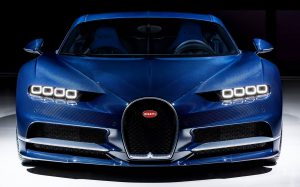
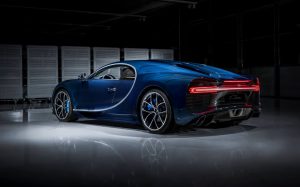
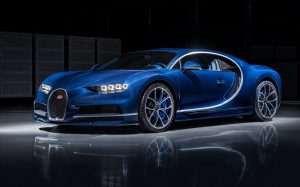

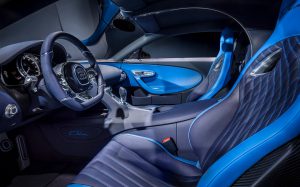

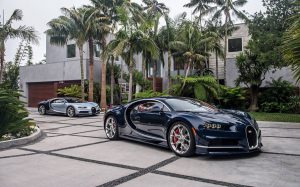
Originally written by Jeremy Clarkson for The Sunday Times Driving
(https://www.driving.co.uk/car-reviews/clarkson/clarkson-review-bugatti-chiron/)
An Introduction To Auto Concierge
Los Angeles Private Car Storage
Private Car Storage. Time is of the essence. It is a never-ending march toward the future and neither slows nor stops for any man. Time is completely finite, making it the ultimate resource. Once a moment in time has passed, that moment is gone forever.
Auto Concierge creates time. Specifically, it creates time for its members by removing the mental and emotional strain of finding the right luxury car storage company and facility. Auto Concierge has created the perfect environment for auto enthusiasts who need to properly maintain their rare, historic, or exotic vehicle, mainly because the company was a concept of a self-described devoted car aficionado.
Scott Elrod, the CEO of Auto Concierge, created the company out of his love of cars and the necessity for a premier auto storage service in the Los Angeles area. “I’ve always had a passion for cars, since rebuilding my first one with my dad at the age of 15; they have been a huge part of my life. Los Angeles is a huge mecca for automobiles, I figured why not create a business around my passion. I did some research and discovered there were very little options available for vehicle storage (at least none I’d consider handing off the keys to my Bel Air to) and God forbid I needed something done. Who do I call, who can I trust? Not satisfied with those answers, I figured there was an opportunity here, so I created Auto Concierge.”
Auto Concierge is “more than just storage” but that isn’t just a fancy tagline, that’s a reality. The company is focused on handling every aspect pertaining to owning a rare or exotic vehicle. Storing a vehicle is a large part of the puzzle, but there are several other pieces that fall into place to complete the whole picture. Auto Concierge offers concierge, transport, and maintenance services as well as vehicle care and exercise for each vehicle that is housed in the Los Angeles compound. There will be a complete review of each of the services provided in the future to better illuminate what makes Auto Concierge distinct.
“Most ‘auto enthusiasts’ will attest that their enthusiasm for their vehicle extends well beyond simply owning and driving one. It is more of an expression of their individuality and lifestyle,” says Scott. “At Auto Concierge, we understand this and as a result have built our business around everything auto.”
It’s just a matter of time before Auto Concierge is known as the premier service for luxury car storage in Los Angeles. If you are in need of the exclusive services that this company offers, please fill out the form under the ‘Contact’ tab at the top of the website. And in the interim, expect more engaging dialogue that will accentuate the many aspects of this burgeoning brand.

